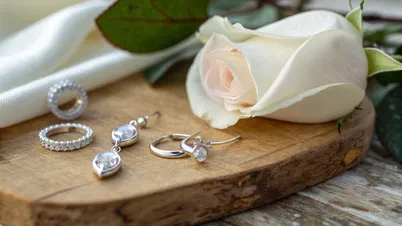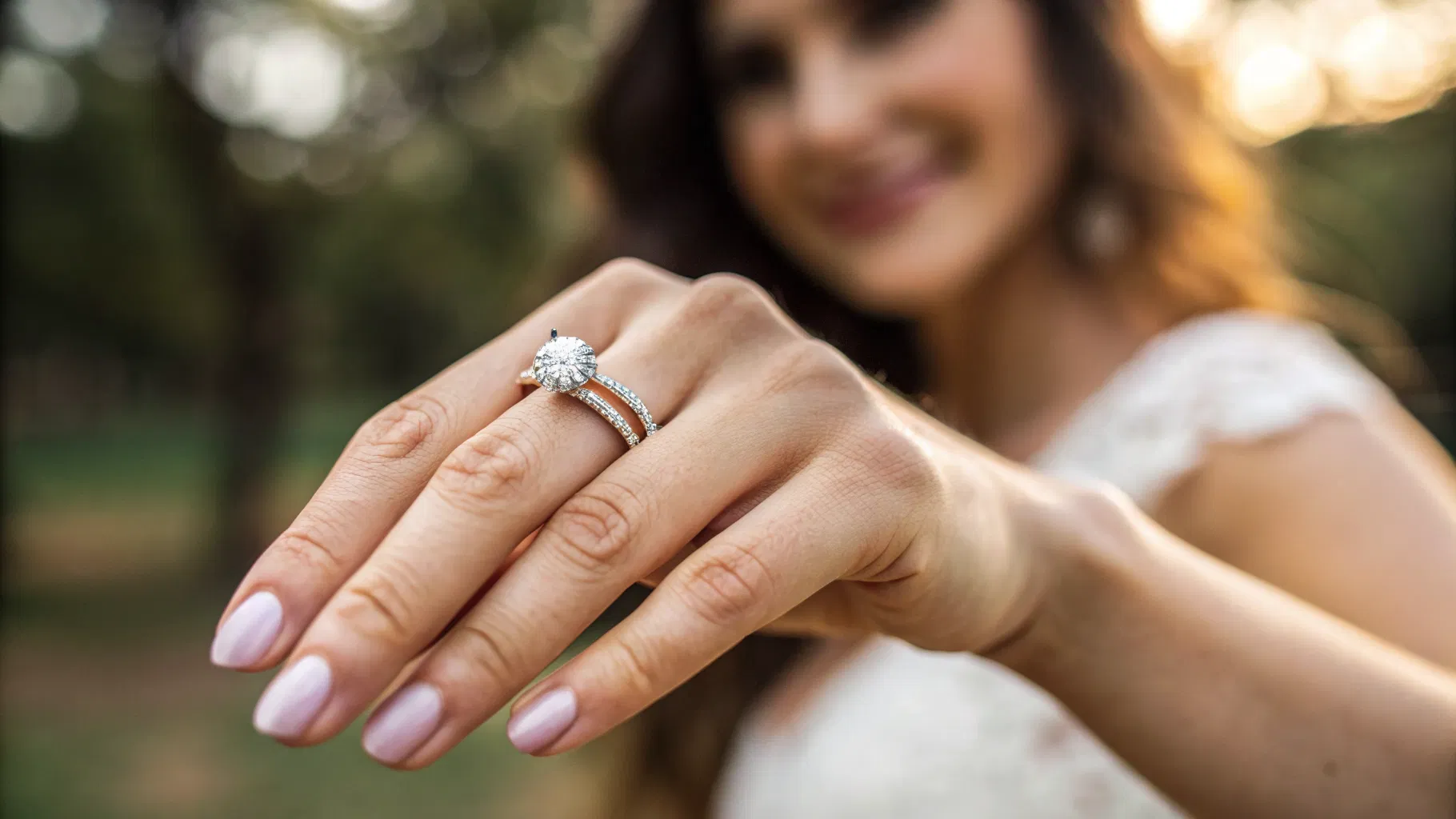
Are Sterling Silver Earrings Safe for Newly Pierced Ears? A Comprehensive Guide
Introduction
The allure of new earrings is undeniable, especially after you’ve made the thrilling decision to get your ears pierced. However, as we embark on this exciting journey into the world of body adornment, many of us find ourselves asking important questions: Are sterling silver earrings safe for newly pierced ears? The answer is not as straightforward as one might hope, and it requires a deeper understanding of materials, healing processes, and personal skin sensitivities.
As consumers increasingly lean towards ethical and sustainable choices, the conversation around the safety of various metals has gained momentum. At DiamondsByUK, we believe that luxury should not come at the expense of ethics, and this sentiment is reflected in our commitment to providing beautiful, sustainable, and conflict-free diamond jewelry. This blog post will explore the implications of wearing sterling silver earrings after a new piercing, the ideal materials for sensitive skin, and the importance of thoughtful choices in our jewelry selections.
Are you dreaming of a piece of jewelry that’s as unique as your story? Join us as we delve into the world of piercing safety and the best practices for ensuring your new adornments complement your personal style and values.
Understanding the Healing Process
Before we dive into the specifics of earring materials, it’s crucial to understand the healing process of newly pierced ears. The time it takes for your ears to heal can vary significantly based on several factors:
- Type of Piercing: Earlobe piercings typically heal within 6 to 8 weeks, while cartilage piercings can take anywhere from 3 to 12 months.
- Aftercare: Proper aftercare, such as regular cleaning and avoiding irritants, plays a significant role in the healing process.
- Individual Sensitivity: Everyone's skin reacts differently to piercings and materials, making personal experience a vital part of the equation.
The Role of Materials in Healing
When it comes to choosing earrings for freshly pierced ears, the material is of utmost importance. Not all metals are created equal, and some can exacerbate irritation, prolong healing, or even cause infections.
- Sterling Silver: While many find sterling silver appealing due to its beauty and affordability, it can contain nickel, a common allergen. For those with sensitive skin, this could lead to complications during the healing process.
- Hypoallergenic Metals: Options such as titanium, surgical stainless steel, and 14k gold are generally recommended for new piercings. These materials are less likely to cause allergic reactions and are known for their biocompatibility.
- Nickel-Free Options: It's crucial to select earrings that are labeled as nickel-free, especially for those with known sensitivities.
In conclusion, while sterling silver earrings might be stylish, they may not be the best choice for newly pierced ears due to their potential for irritation and allergic reactions.
Ideal Materials for Newly Pierced Ears
Understanding the safest materials for your earrings is essential for ensuring a smooth healing process. Below, we explore some of the most suitable options:
Titanium
- Benefits: Titanium is a popular choice for initial piercings due to its lightweight nature and high strength. It’s also biocompatible, meaning it’s less likely to cause irritation or allergic reactions.
- Maintenance: Simple to clean and resistant to tarnishing, titanium earrings can be worn with minimal care.
Surgical Stainless Steel
- Benefits: This material is highly durable and resistant to rust and corrosion. It's considered one of the safest options for newly pierced ears and is often used in medical devices.
- Maintenance: Like titanium, surgical stainless steel requires minimal care and can be cleaned easily.
14k Gold
- Benefits: Gold is a classic choice, and when it’s 14k or higher, it’s less likely to irritate sensitive skin. Ensure that the gold is nickel-free for maximum safety.
- Maintenance: Gold earrings can tarnish over time, but regular cleaning can help maintain their shine.
Other Considerations
- Hypoallergenic Options: If you're particularly sensitive, look for earrings labeled specifically as hypoallergenic. These are designed to minimize the risk of irritation and are often made from the aforementioned materials.
- Simplicity in Design: Opt for straightforward designs without intricate textures that can trap bacteria. Simple studs are often the best choice for new piercings.
Why Avoid Sterling Silver for Initial Piercings?
While sterling silver is a beautiful and accessible option, it may not be the best choice for newly pierced ears. Here’s why:
- Nickel Content: Many sterling silver earrings contain nickel, which can cause allergic reactions and prolong the healing process.
- Tarnishing: Silver can tarnish when it interacts with moisture and skin oils, potentially leading to infections during the healing phase.
- Weight: Sterling silver can be heavier than other materials, putting unnecessary pressure on newly healed piercings.
At DiamondsByUK, we emphasize the importance of choosing jewelry that aligns with your values of sustainability and ethical production. If you're looking for beautiful, hypoallergenic options for your newly pierced ears, consider exploring our stunning collection of customizable jewelry that reflects your personal style while ensuring comfort and safety.
Best Practices for Aftercare
Ensuring a smooth healing process goes beyond choosing the right earrings. Proper aftercare is essential. Here are some best practices to follow:
Cleaning Your Piercings
- Frequency: Clean your piercings twice daily using a saline solution or a gentle soap recommended by your piercer.
- Method: Use a cotton swab or pad to gently clean the area, avoiding any harsh chemicals or alcohol-based products that could irritate.
Avoid Touching
- Keep Hands Clean: Always wash your hands before touching your earrings or the piercing site to prevent transferring bacteria.
- Avoid Twisting: Resist the urge to twist or turn your earrings, as this can irritate the skin and hinder healing.
Monitoring for Infection
- Signs of Infection: Keep an eye out for redness, swelling, or discharge from the piercing site. If you notice any of these symptoms, consult your piercer or a healthcare professional immediately.
When to Change Your Earrings
Patience is key when it comes to changing your earrings. It’s generally advisable to wait until your piercings are fully healed before switching to different styles. For earlobe piercings, this typically means waiting at least 6 to 8 weeks. Cartilage piercings may take longer, usually around 3 to 12 months.
When you do decide to change your earrings, choose high-quality materials that are gentle on sensitive skin. This is a perfect time to explore DiamondsByUK's exquisite collection of ethical jewelry, where you can find stunning designs that are both beautiful and safe for your newly healed piercings.
The Importance of Professional Piercing Studios
Choosing the right studio for your piercing is just as crucial as selecting the proper jewelry. Here are some tips for ensuring you receive a safe and professional service:
Research the Studio
- Cleanliness: Ensure that the studio maintains high standards of cleanliness and sterilization.
- Certifications: Look for studios that are members of professional organizations, indicating adherence to industry standards.
Ask Questions
- Experience: Don’t hesitate to ask your piercer about their experience and techniques. A reputable piercer will be happy to answer your questions and address any concerns you may have.
Follow Aftercare Instructions
- Clear Guidelines: A professional piercer should provide you with clear aftercare instructions tailored to your specific piercing. Follow these guidelines closely to promote healing and prevent complications.
Conclusion
Choosing the right earrings for newly pierced ears is essential for ensuring a smooth healing process and minimizing the risk of irritation or infection. While sterling silver earrings may be tempting, they often come with potential drawbacks, such as nickel content and tarnishing. Instead, consider hypoallergenic materials like titanium, surgical stainless steel, or 14k gold for your initial earrings.
At DiamondsByUK, we are committed to providing beautiful, ethical, and customizable jewelry options that align with your values and style. We invite you to explore our stunning collection of ethical jewelry designed for every occasion. If you’re interested in creating a bespoke piece that reflects your unique story, don’t hesitate to contact us to start your custom design journey today, with delivery often in just 1–2 weeks.
FAQ
1. How long does it take for new piercings to heal?
Earlobe piercings typically heal within 6 to 8 weeks, while cartilage piercings can take anywhere from 3 to 12 months.
2. What materials should I avoid for initial piercings?
Avoid materials that contain nickel, such as some sterling silver options, as they can cause allergic reactions and irritation.
3. How often should I clean my new piercings?
Clean your piercings twice daily using a saline solution or a gentle soap recommended by your piercer.
4. When can I change my earrings after getting pierced?
It’s best to wait until your piercings are fully healed before changing earrings. For earlobe piercings, this typically means waiting at least 6 to 8 weeks.
5. What should I do if I notice signs of infection?
If you notice redness, swelling, or discharge from the piercing site, consult your piercer or a healthcare professional immediately.
By following these guidelines and choosing the right materials, you can enjoy your new earrings while ensuring a safe and beautiful healing process. Whether you're looking for ethical jewelry or considering a custom design, we at DiamondsByUK are here to support you in making joyful and informed choices.


